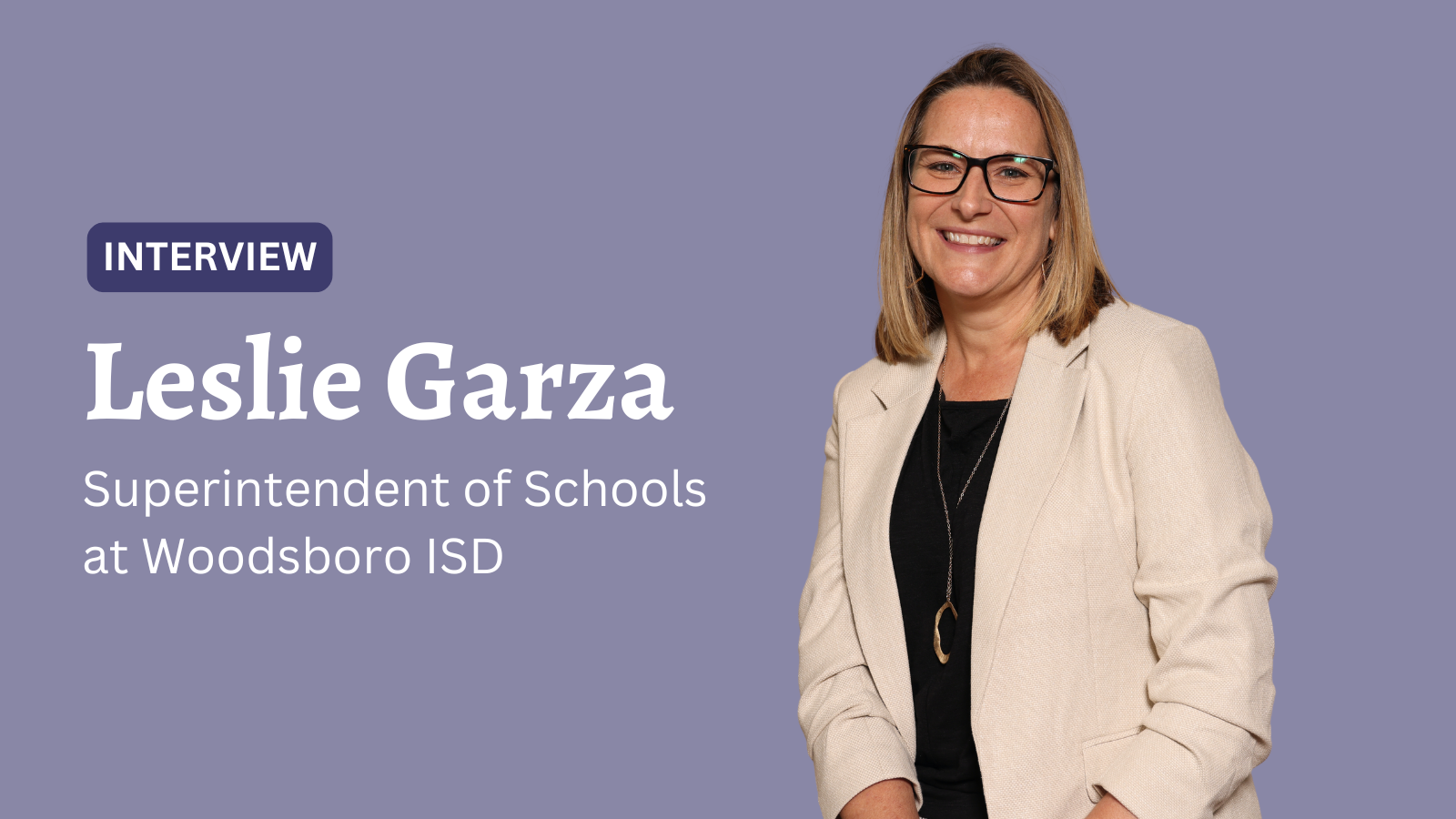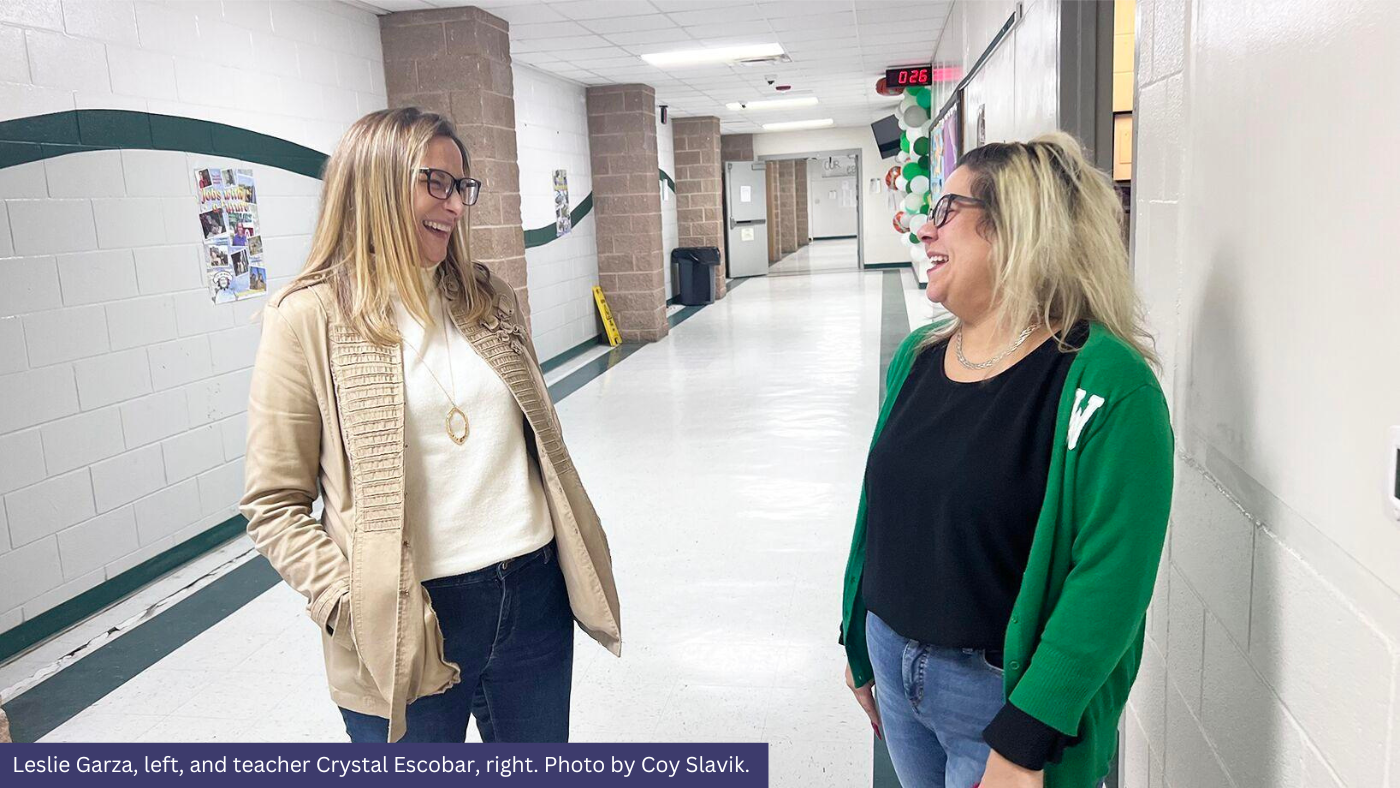- Building Skills
- Managing Emotions
- Safe, Supportive and Positive School Climates
- Elementary School

In this series, we’ll highlight impactful mental and behavioral health best practices across Texas to inspire schools that want to develop similar opportunities for youth.
The staff at Woodsboro ISD partnered with Project AWARE and local organizations to provide free summer camp sessions for students in 1st to 5th grade. The summer camps included fun and creative activities, cooking, gardening, and positive youth development opportunities.
When considering the Texas School Mental Health Framework, Woodsboro ISD’s summer programs address multiple components of a comprehensive school mental health system including promoting a positive school climate, building relationships, managing emotions, and developing decision-making skills.
Check out our conversation with Leslie Garza, Superintendent of Schools at Woodsboro ISD and previously the principal of Woodsboro Elementary School for 13 years.
1) How did incorporating mental health supports into the summer programs get started? What was the need you were trying to meet?
We started incorporating mental health supports after we ended virtual learning and returned to campus. After the COVID-19 pandemic, kids came back to school with increased learning gaps, frustration, and anxiety. We offered summer camp sessions for two different groups to address those struggles. One was for any student who wanted to maintain skills and have something enriching to do in our small town, and the other was for a target group that didn’t pass the STAAR test and needed accelerated instruction.
The latter group felt like they were failures after finishing the semester. They didn’t want to come in the summer and continue doing the same work. We really felt the student’s frustration, so when we discussed the challenges as a team, we asked ourselves, “What else can we do to help them be successful?”
We were part of the Project AWARE grant and had a licensed professional counselor on campus with us, Mercedes, so we asked her to offer positive youth development to the kids over the summer. With her help, we created rotations where students would have their reading or math lessons followed by other activities that encouraged them to be there.
2) What steps did you take to implement these supports in the summer programs?
It was mainly setting up meetings with everyone involved and getting the logistics figured out. Our school had been doing summer camps for many years so it was already rolling, but we decided to incorporate positive youth development that year.
I met with Mercedes, our school counselor Carmen, my teaching and paraprofessional support group, and Texas A&M’s AgriLife Extension. AgriLife was already part of our school, and they worked with our kids on different activities throughout the year.
We also used our social media platforms, school app, and in-person events to promote the sessions to parents.

3) How did you blend academics and mental health supports in the camps? Can you give us an example?
A typical day could start with the kids going to a reading lesson, then to a cooking class, followed by math, and then to a session with Mercedes about growth mindset.
AgriLife’s cooking class taught students about healthy snacks and how to make them. Then, Mercedes would talk to them about topics like resiliency, goal setting, and how to move from a failure mindset to a growth mindset. She provided a variety of activities to break up the day so they felt excited about going to camp rather than seeing it as a punishment.
We tried to tie the lessons into life skills they need to know to be able to accomplish their academic skills and why those skills are important. It’s not just to pass a test. We brought in the cooking class because then they could use the math skills in real life. They were also using their reading skills because they were reading labels on the food, and so on.
4) After seeing this work in action, are there any elements you’d change or improve moving forward?
I would say getting more pre and post-assessments and organizing more targeted groups with students who have specific needs or goals. That would help us see the full magnitude of the program.
5) Can you tell us about this curriculum’s impact on students?
In past summers, the kids weren’t really taking anything from what they were doing. After the summer with positive youth development and other activities, I noticed they were much more engaged and active.
We also incorporated positive youth development during the school year. I did a morning announcement that included it, our counselor had bi-weekly meetings with students, and teachers did a weekly lesson. Last year, around STAAR testing time, I moved to my current role and our counselor helped as a testing coordinator, so the positive youth development kind of paused. I remember we thought, “We were doing this, but did it truly make a difference?”
Well, we started getting parent and student phone calls. The students would go home and say, “Can you call Ms. Garza and tell them to start doing what they were doing again? Because we were listening.” So, when the kids and parents are reaching out to say it made a difference, it becomes clear that what we’re doing is important.
6) What funding did you use to support this effort?
We had a few different grants, including the AWARE grant and some academic grants for personnel and supplies. AgriLife’s services were free, and we reached out to other programs that provided resources for schools.
We also got creative with calendars. Our school counselor works more days than a teacher would work, so she and Mercedes played off each other’s calendars to make sure we were covered and didn’t have to pay additional costs.

7) What did you learn from this process, and what advice do you have for others who want to try something similar?
Well, I learned the value of positive youth development opportunities. When it’s there, it does work and when it’s gone, people notice. I see some of these kids at the secondary level now and we can still use the same language in conversations. I just talked to one girl yesterday who was upset at something, and I said, “Think about our puddle ocean. You’ve had an ocean of a good day and you’re having a puddle moment; we can’t just shut down.”
Sometimes people get so bent up in making sure they have everything perfect— having a plan and all the logistics mapped out. I say just dive in. Look at what’s working, have a quick brainstorm, and make adjustments along the way. I feel like people don’t get things accomplished because they’re so caught up in the logistics.
It helps to have advisory committees with community members from different organizations so you hear what’s available and get their feedback. Sometimes we only focus on school-based people, but bringing in outside people can help make something great.
Stay tuned for more Texas school district stories
Thank you to Leslie for telling us about her incredible work at Woodsboro ISD! It’s inspiring to see just how impactful mental health curriculum can be on children’s well-being.
Our Texas School Mental Health website gives school mental health leaders the tools they need to develop a comprehensive school mental health system. Visit our best practices page to learn more about resources and programs for schools.
If you have a question about Project AWARE, district spotlights, or something else— reach out to our team!
